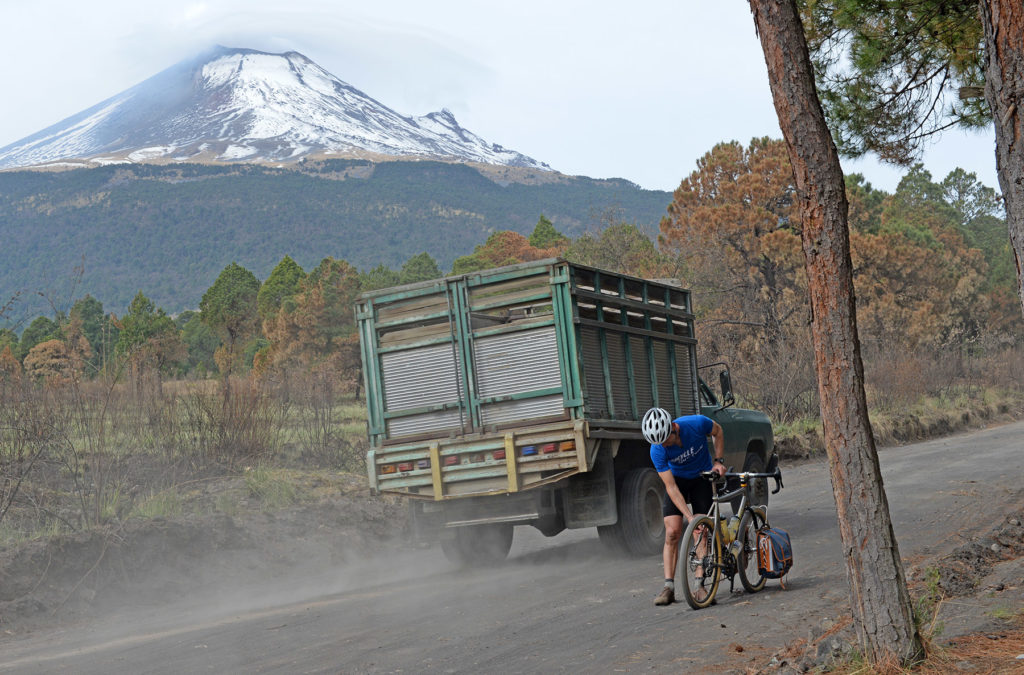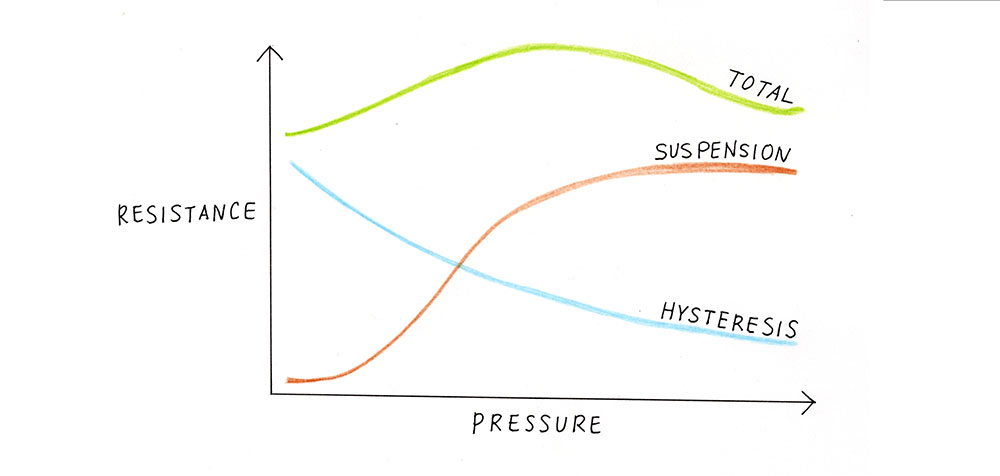Tire Pressure Calculator

Finally a tire pressure calculator based on real-road rolling resistance measurements.
On real roads—rather than on a steel drum in the lab—supple high-performance tires work best at considerably lower pressures than most cyclists are used to. Lower pressures roll as fast or faster, while optimizing comfort and tire grip. They also result in fewer flat tires: A soft tire often rolls over debris that would puncture a tire inflated to high pressure. Your ideal tire pressure depends on your tire size, your weight (and that of your bike), and your riding style and preferences.
Tire Pressure Calculator
The calculator gives you two tire pressure recommendations. Use the ‘Soft’ value for gravel, rough pavement, or if you prefer a more comfortable ride. Use the ‘Firm’ value if you like your bike to have a firm feel. The ‘Firm’ values also provide a considerable margin of safety if your pressure drops a bit. With the ‘Soft’ pressure, you are stressing your tire casing more, and it may wear out faster.
For almost 20 years, we have tested tires in many widths, at many pressures, with many casings and tread patterns—on smooth roads, with a rider on the bike. We’ve found that supple high-performance tires roll at the same speed at either of these two pressures: soft or firm. Pressures between these two values roll a little slower. On rough surfaces, your bike will be faster at the ‘Soft’ pressure.
These pressure recommendations optimize your bike for speed, but speed isn’t everything. Use these values as starting points to find out which pressure feels best for your bike, your terrain and your riding style. Also remember that your pump’s gauge may not be accurate. When in doubt, use a tire pressure that feels right and safe to you instead of values provided by the calculator.
Do not exceed the maximum pressure for your tire and/or rim. For tubeless installation, many tires have lower maximum pressures than what’s listed on the sidewall. Refer to the specifications of your tire/rim manufacturers. Maximum pressure for tubeless tires on hookless rims is defined by ETRTO standards: 73 psi (5 bar).
Background
Lower pressure means less vibration and less energy lost to suspension losses. That makes up for the higher hysteretic losses due to greater deformation of the tire.

These two factors – suspension losses and hysteretic losses – do not interact in a linear way, as shown in the conceptual graph on the left. The result: Mid-range pressures actually roll a little slower than either high or low pressures.
Based on Bicycle Quarterly’s tests of rolling resistance for different tire widths and pressures, together with Frank Berto’s measurements of tire drop under different weights, we have established two tire pressure charts. These charts were translated into this Tire Pressure Calculator.


